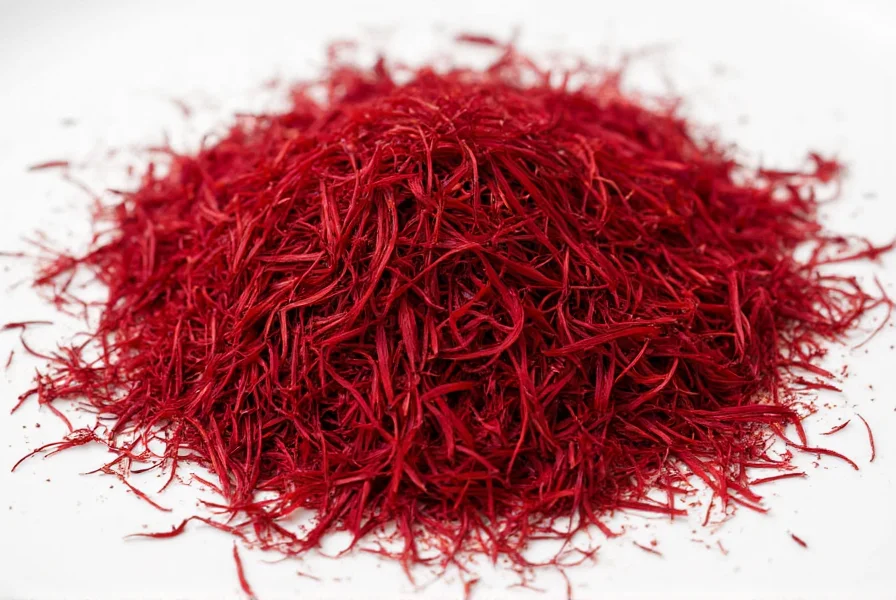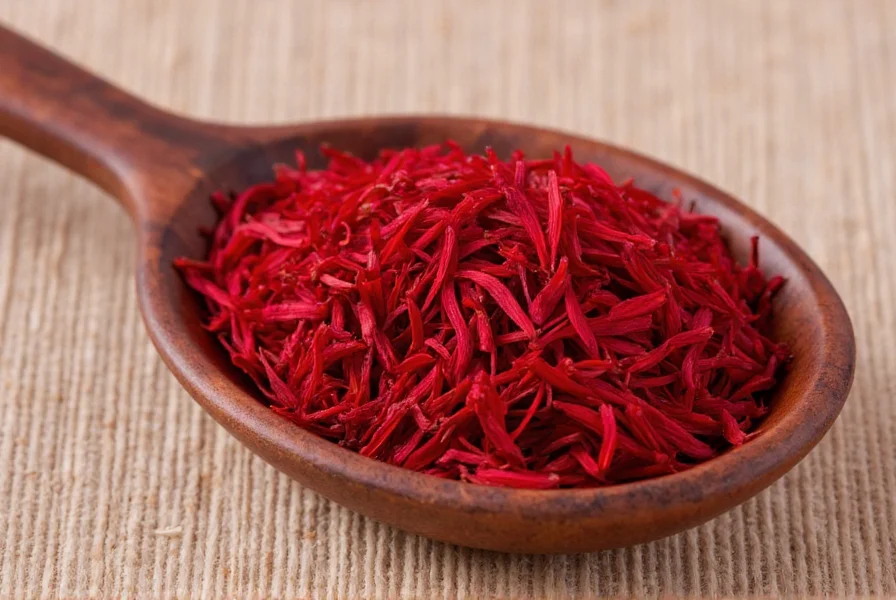Saffron, derived from the delicate stigmas of the Crocus sativus flower, represents one of the world's most valuable spices by weight. This precious ingredient has maintained cultural and practical significance across civilizations for millennia. Understanding what's saffron used for requires examining its multifaceted applications that extend far beyond its reputation as an expensive kitchen staple.
The Culinary Powerhouse: Saffron in Cooking
Chefs and home cooks prize saffron for its unique ability to transform ordinary dishes into extraordinary culinary experiences. Unlike many spices that primarily add heat, saffron contributes a complex flavor profile described as floral, honey-like, and slightly earthy with subtle metallic notes.
| Global Dish | Country/Region | Saffron's Role |
|---|---|---|
| Paella | Spain | Provides signature golden color and distinctive aroma |
| Biryani | India/Pakistan | Colors rice and adds subtle floral notes to meat dishes |
| Risotto alla Milanese | Italy | Creates vibrant yellow hue and delicate flavor |
| Sholeh Zard | Persia (Iran) | Colors and flavors traditional saffron rice pudding |
Professional chefs recommend toasting saffron threads lightly before steeping in warm liquid to maximize flavor extraction. This technique releases safranal, the compound responsible for saffron's characteristic aroma. When properly used, just a few threads can transform an entire dish—making understanding proper saffron usage techniques essential for culinary success.

Traditional Medicinal Applications
Long before modern science examined saffron's properties, traditional healing systems incorporated it for various purposes. Ancient Persian physicians documented saffron's use in treating depression, while Ayurvedic medicine employed it for digestive issues and as an aphrodisiac.
Contemporary research has begun investigating these traditional claims. Studies suggest saffron contains crocin and safranal, compounds with potential antioxidant and mood-regulating properties. However, it's crucial to understand that while preliminary research shows promise regarding saffron health benefits for mood support, these findings don't constitute medical advice or proven treatments.
Responsible discussion of saffron's medicinal applications must include important caveats: therapeutic doses used in studies often exceed culinary amounts, and saffron supplements aren't regulated like pharmaceuticals. Anyone considering saffron for health purposes should consult healthcare professionals, especially since high doses can be toxic.
Historical and Cultural Significance
Beyond the kitchen and apothecary, saffron's history reveals diverse applications that shaped civilizations. In ancient Greece, it colored royal garments and perfumed wedding beds. Medieval European monks used it to illuminate manuscripts, creating the distinctive golden pages seen in historical religious texts.
The spice's value historically rivaled gold, with documented cases of saffron adulteration punishable by death in some European regions. This historical context helps explain why understanding authentic saffron identification methods remains important today, as counterfeit products still enter the market.
Modern Non-Culinary Applications
While culinary use dominates saffron consumption today, contemporary applications extend to unexpected areas. The textile industry occasionally uses saffron for natural dyeing processes, particularly in artisanal fabric production where chemical dyes are undesirable.
Some cosmetic manufacturers incorporate saffron into premium skincare products, leveraging its antioxidant properties and distinctive golden hue. The perfume industry values saffron for its complex aromatic profile, though its high cost limits widespread use.

Practical Guidance for Saffron Usage
For those exploring how to use saffron in everyday cooking, several practical considerations matter. First, quality varies dramatically—authentic saffron should have deep red threads with orange tips, never uniformly red. When purchasing, look for ISO 3632 certification which verifies quality standards.
Storage affects potency: keep saffron in an airtight container away from light and moisture. Properly stored, it maintains flavor for up to two years, though peak quality occurs within the first year. For maximum flavor extraction, steep threads in warm (not boiling) liquid for 15-20 minutes before adding to dishes.
Understanding proper saffron measurement techniques prevents waste. Recipes typically specify by threads or weight rather than volume, as threads vary in size. A good rule of thumb: 20-30 threads (about 0.1g) flavors four servings of rice. Remember that saffron's flavor intensifies over time, so dishes often taste better the day after preparation.
Conclusion: The Enduring Value of Saffron
The question of what's saffron used for reveals an ingredient that transcends simple culinary classification. From its role in defining national cuisines to its presence in historical rituals and potential health applications, saffron represents a convergence of culture, science, and tradition. Its continued relevance despite modern alternatives speaks to its irreplaceable sensory qualities.
Whether you're a curious home cook exploring traditional saffron recipes or someone investigating its historical significance, approaching saffron with respect for its complexity yields rewarding experiences. By understanding both its practical applications and cultural context, we honor a spice that has enriched human experience for thousands of years.
Frequently Asked Questions
What are the primary culinary uses of saffron?
Saffron primarily flavors and colors rice dishes like Spanish paella and Italian risotto, seafood preparations, sauces, and baked goods. Its distinctive golden hue and subtle floral flavor enhance dishes without overpowering other ingredients. Professional chefs use it in small quantities—typically 15-30 threads for four servings—as it's potent and expensive.
Can saffron be used for health purposes?
While traditional medicine systems have used saffron for centuries, modern research shows preliminary evidence that saffron compounds may support mood regulation and provide antioxidant benefits. However, culinary amounts differ significantly from therapeutic doses used in studies. Anyone considering saffron for health reasons should consult healthcare professionals, as high doses can be toxic and supplements aren't regulated like medications.
How should I store saffron to maintain its quality?
Store saffron in an airtight container away from light, heat, and moisture. A dark cupboard works well, but many experts recommend refrigeration in a sealed container to preserve potency. Properly stored saffron maintains flavor for up to two years, though peak quality occurs within the first year. Avoid freezing as moisture condensation can degrade quality.
What's the difference between saffron threads and powder?
Saffron threads (stigmas) represent the whole spice and generally offer superior quality and longer shelf life. Powdered saffron provides convenience but degrades faster and is more susceptible to adulteration. Authentic threads should be deep red with orange tips—uniformly red threads often indicate lower quality or fake saffron. For best results, steep threads in warm liquid before use rather than substituting powder.
How can I tell if saffron is authentic?
Authentic saffron threads are deep red with orange tips, never uniformly red. When placed in warm water, they gradually release a golden-yellow color (not instant red). Genuine saffron has a distinctive floral-honey aroma, not musty or metallic. Look for ISO 3632 certification when purchasing, and be wary of prices that seem too good to be true—real saffron is expensive due to labor-intensive harvesting.










 浙公网安备
33010002000092号
浙公网安备
33010002000092号 浙B2-20120091-4
浙B2-20120091-4